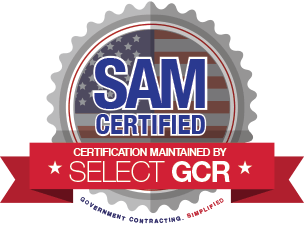ENVIRONMENTAL DUE DILIGENCE
Environmental due diligence is a critical part of major commercial real estate transactions that assess a property for potential risk of environmental contamination. Many institutions require environmental due diligence prior to financing. Types of environmental due diligence include but are not limited to Transaction Screens and Phase I and Phase II Environmental Site Assessments. AFI's experienced staff can assist in determining what level of environmental due diligence is needed for your transaction.
AFI has licensed and qualified staff capable of providing the following services:
• Transaction Screens • Phase I Environmental Site Assessments
• Phase II Environmental Site Assessments • Phase I Report Updates
• Third Party Desktop Reviews
Transaction Screens
A Transaction Screen Assessment is a cost-effective environmental due diligence report that was developed to provide a reduced scope of environmental inquiry for small cap loans and/or properties perceived to represent a low environmental risk. Transaction Screens are voluntary procedures meant to identify "potential environmental concerns" as opposed to "recognized environmental concerns," which may be a catalyst for additional investigation. Transaction Screens consist of the following components:
• Owner/Occupant Questionnaire
• Site Visit
• Limited Historical Records Review
• Limited Governmental Records Review
AFI conducts each Transaction Screen consistent with the scope and limitations of the most current ASTM E1528 Standard Practice.
Phase I Environmental Site Assessments
The purpose of a Phase I Environmental Assessment (ESA) is to provide an independent, professional opinion of any recognized environmental condition associated with the subject property. According to ASTM's E1527 Standard Practice, "recognized environmental condition" means the presence or likely presence of any hazardous substances or petroleum products on a property under conditions that indicate an existing release, a past release, or a material threat of a release of any hazardous substances or petroleum products into structures on the subject property or into the ground, groundwater, or surface water of the property.
AFI conducts each Phase I ESA conducts each Phase I ESA consistent with the scope and limitations of the latest ASTM E1527 Standard Practice and the US Environmental Protection Agency's (USEPA's) final rule and standard for All Appropriate Inquiry (AAI). This rule establishes a minimum due diligence standard for innocent landowners, bona fide prospective purchasers, and contiguous property owners seeking liability protection under the Comprehensive Environmental Response, Compensation, and Liability Act (CERCLA) and for assessments under CERCLA 104(k)(2)(B) Brownfield Grant Program. AFI's Phase I ESA reports typically consist of four components:
• Records Review: AFI reviews federal, state, and local government records in accordance with ASTM protocol to help identify recognized environmental conditions. Additionally, historical records, including city directories, fire insurance maps, and aerial photographs, are thoroughly reviewed to determine the property's obvious first developed use, or back to 1940, whichever is earlier.
• Interviews: AFI conducts interviews of owners and operators of the property as well as local government officials to determine uses of the property and to identify any recognized environmental conditions (RECs).
• Site Inspection: AFI's environmental professionals perform visual and physical site reconnaissance to aid in determining the current and past uses as well as physical, geologic, hydrologic, hydrogeologic, and topographic conditions of the site and surrounding properties.
• Report of Findings: AFI prepares a clear and concise written report presenting all finding, opinions, and conclusions with full documentation in accordance with ASTM protocol.
Phase II Environmental Site Assessments
A Phase II Environmental Site Assessment (ESA) is typically performed to evaluate the recognized environmental conditions identified in a Phase I ESA. In Cases where a Phase II ESA is performed to determine if hazardous substances or petroleum products have been disposed of or released at a property that has resulted in subsurface impact, AFI will evaluate potential migration pathways and may include an evaluation of contamination fate and transport. A Phase II ESA will comply with the ASTM E1903 Standard Practice.
Phase II ESAs are often needed when a Phase I ESA indicates possible site contamination. AFI's professionals are experienced in all Phase II ESA studies including:
• Soil and Groundwater Investigation • Soil Vapor Intrusion • Surface, Soil, and Water Sampling/Analysis
• Indoor Air Quality Assessments • Waste Drum Characterization and Sampling/Analysis
AFI is also qualified to perform Phase I Report Updates and Third-Party Desktop Reviews.
CONTACT US TODAY!
Contact Us
We will get back to you as soon as possible.
Please try again later.
AFI ENVIRONMENTAL INC.
Phone: (716) 283-7645 Email: info@afienvironmental.com
8644 Buffalo Avenue, Niagara Falls, New York 14304

